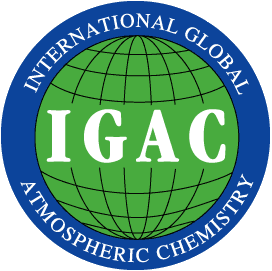Joint SPARC/IGAC UTLS Workshop:
Processes governing the chemical composition
of the mid-latitude UTLS
18-20 May 2005
Mainz, Germany
SPARC and IGAC will be co-hosting an invitational workshop this May to discuss our current understanding about the processes that govern the chemical composition of the mid-latitude UTLS.
******The meeting will run from 8:30am to 6:00pm on Wednesday and Thursday and 8:30am to 12:30pm on Friday.******
The workshop will be three days total, with both plenary and breakout sessions.
Background
Understanding changing composition in the UTLS (Upper Troposphere/Lower Stratosphere) region at mid-latitudes is important for understanding changing climate. Perturbations to the distributions of trace gases such as O3, H2O, and aerosols in this region can lead to direct forcing on climate. Indirect effects through, for example, changing cirrus following new particle production or contrail formation from aircraft emissions can also impact the radiative balance in this region. In turn, climate change, through changing temperatures and transport patterns, has the potential to effect the chemical composition of the mid-latitude UTLS and thus the composition of the troposphere and stratosphere. Transport of ozone from the stratosphere to the troposphere may change in response to ozone recovery and greenhouse gas impacts in the stratosphere. Also, as noted in WMO (2003), transport of very short-lived halogenated species (VSLS) and pollutants from the troposphere to the stratosphere at mid-latitudes may be important for understanding current and future stratospheric ozone change.
Focus of Workshop
The IGAC Project (International Global Atmospheric Chemistry; under IGBP and CACGP) and the SPARC Project (Stratospheric Processes and their Role in Climate; under WCRP) will be holding a joint workshop to discuss atmospheric chemistry/climate interactions in the mid-latitude UTLS. The workshop will focus on discussing the relative roles of transport, including small-scale mixing, and chemistry in determining the chemical composition of the mid-latitude UTLS region. One aim is to update our current state of knowledge following a previous workshop in Bad Tölz (April, 2001)1 and to move forward on some of the conclusions from the joint SPARC/IGAC workshop on Chemistry-Climate interactions (Giens, 2003)2. It is also worth noting that it is nearly 10 years since the publication of the very influential review by Holton et al. (1995)3, which summarized the state of knowledge at that time related primarily to dynamical drivers of stratosphere-troposphere exchange (STE). A review paper following the workshop could not only summarize the new perspectives inspired by new observational data, but could also define key outstanding issues and the new measurements and modeling approaches required to make progress.
The workshop is centered on four sessions, addressing the following key scientific questions:
1) Which dynamical and meteorological processes govern the chemical composition of the mid-latitude UTLS?
Heini Wernli & Horst Fischer
2) What is the relative importance of chemical versus dynamical processes in governing the chemical composition of the extratropical UTLS?
Peter Haynes & Kathy Law
3) Which chemical/physical processes are important in governing UTLS composition?
Bernd Kärcher & Ross Salawitch
4) How do we better quantify the net exchange of ozone, and other trace constituents, between the stratosphere and the troposphere?
Michael Prather & Laura Pan
Workshop Outcomes
In addition to a meeting report that would be published in the SPARC/IGAC newsletters, it is our intention that a review paper will be written which will summarize our current state of knowledge and key outstanding issues on extratropical UTLS chemical composition. This could be viewed as an update to Holton et al (1995)3 and a follow up on Stohl et al. (2003)4, with a mid-latitude and a chemical perspective, and it could include recent results from both modeling approaches and observational data. It could also provide some future directions in terms of what measurements and model improvements are needed and how these efforts should be combined to produce a more coordinated approach. Specifics of the paper will be driven by the workshop discussions.
This will be followed by breakout sessions where each of the four questions will be discussed in more detail. We will then re-convene to summarize and discuss the conclusions of each session. Two co-chairs will lead the breakout session discussions, which we anticipate may lead to a review paper(s) or other publication(s). The workshop and any resulting papers are intended to be highly collaborative, and we anticipate having a very participatory set of attendees at the meeting.
Workshop organizers: Kathy Law, Laura Pan, Heini Wernli, Horst Fischer, Ravishakara, Sarah Doherty, Peter Haynes, Bernd Kärcher, Michael Prather, and Ross Salawitch.
1SPARC Tropopause workshop Haynes P. and T. Shepherd, Report on the SPARC tropopause workshop. SPARC Newsletter 17, 3-10
2A report from this meeting was published in the IGACtivities Newsletter No. 30, which can be downloaded from http://www.igac.noaa.gov/newsletter/index.php
3Holton, J.R., Haynes, P.H., McIntyre, M.E., Douglass, A.R., Rood, R.B., Pfister, L., Stratosphere-troposphere exchange. Rev. Geophys. 33, 403-439. 1995.
4Stohl, A, H. Wernli, P. James, M. Bourqui, C. Forster, M.A. Liniger, P. Seibert, M. Sprenger, A New Perspective of Stratosphere-Troposphere Exchange, Bulletin of the American Meterological Society 84, 1565-1573, 2003.


